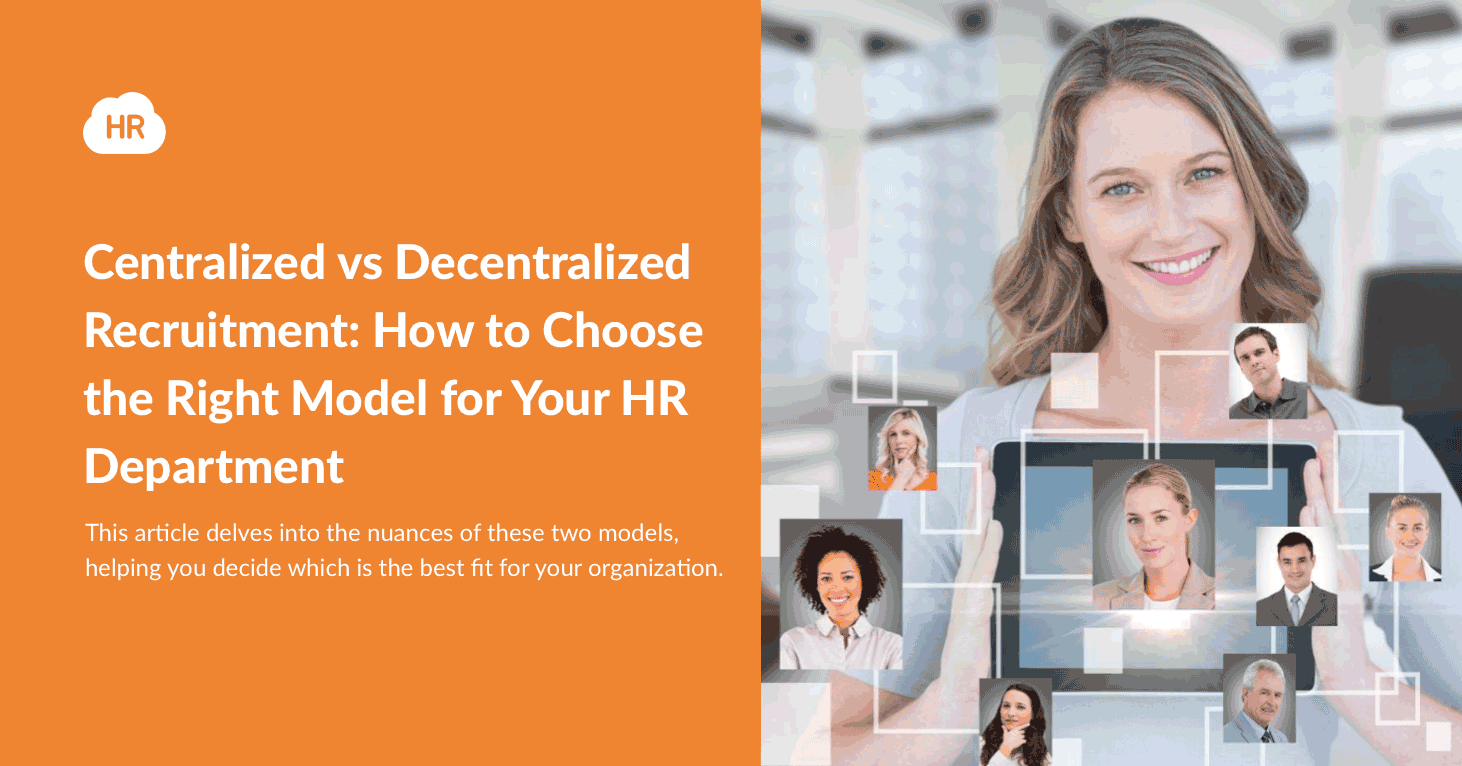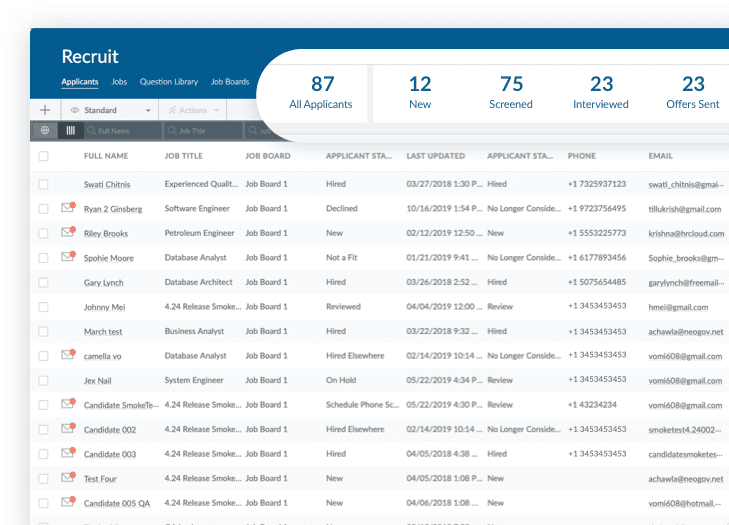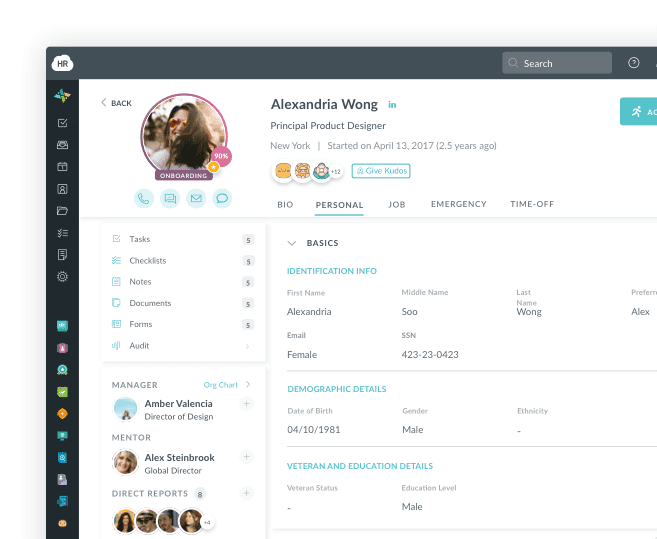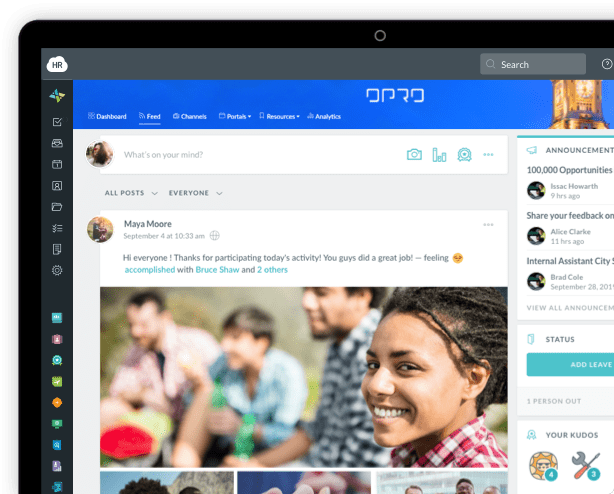Centralized vs Decentralized Recruitment: Choose the Right Model for Your HR Department

One of the key decisions that HR professionals face is choosing the right recruitment model. The efficiency and success of an organization's HR department can significantly depend on whether it adopts a centralized or decentralized approach to recruitment.
This article delves into the nuances of these two models, helping you decide which is the best fit for your organization.
Understanding Centralized Recruitment
Centralized recruitment is a model where all hiring decisions and processes are managed by a single central team within the organization. This approach ensures uniformity and consistency in hiring practices across the entire organization. Its benefits include streamlined processes, leading to cost and time efficiencies, and a stronger, more unified recruitment brand.
In centralized recruitment, the central team typically utilizes standardized recruitment tools and techniques, which helps in maintaining quality control over the hiring process. Furthermore, it facilitates better compliance with legal and organizational policies, as the central team is well-versed in these aspects.
However, centralized recruitment can sometimes be too rigid, lacking the flexibility to address specific needs of different departments or geographic locations. There's also a potential risk of a disconnect between the central HR department and local operations.
Decentralized Recruitment Explained
In contrast, decentralized recruitment delegates the recruitment responsibilities to individual departments or regional offices. This approach allows for a more tailored recruitment strategy that can adapt to the unique needs and cultures of different parts of the organization. It offers agility and local insights, which can be crucial in certain industries or regions.
Decentralized recruitment often leads to enhanced employee engagement and satisfaction, as local managers have a better understanding of their team's dynamics and needs. However, this model can lead to duplication of efforts and resources, as different departments may end up using separate tools and processes for similar recruitment tasks.
Other challenges with this model include potential inconsistencies in hiring practices, which can dilute the overall employer brand. It may also require more resources, as each unit needs its recruitment capabilities.
Post Jobs, Evaluete Candidates,
and Hire the Best with Our
Applicant Tracking System
Learn More about Recruit
Comparison and Contrasts
When comparing centralized and decentralized recruitment, several factors come into play.
Centralized models offer better control and standardization, while decentralized models excel in adaptability and local relevance. In terms of cost, centralized recruitment can be more economical due to economies of scale, but decentralized recruitment might offer better insights and effectiveness in local or specialized markets.
Also, centralized recruitment often leads to a more cohesive employer brand, which is crucial in attracting top talent. However, it can struggle in environments where individualized and creative recruitment strategies are needed.
On the other hand, decentralized recruitment fosters innovation and allows for quick adaptation to local market trends, but it can sometimes lead to a fragmented company culture if not managed carefully.
Case Studies/Real-World Examples
Several leading companies exemplify these models. For example, a tech giant might employ centralized recruitment to maintain a strong, cohesive brand image, while a multinational retail chain could opt for decentralized recruitment to better understand and serve local markets.
Here are some real-world examples:
Centralized Recruitment
Fortune 500 Automotive Parts Retailer
A major retailer with decentralized recruitment faced challenges with time-consuming processes and inconsistent hiring practices. Transitioning to a centralized model through a partnership, they implemented a system involving local and international recruiters, streamlining their process.
[Source: Freepik]
This shift resulted in a significant decrease in time-to-fill from 77 to 47 days and an annual savings of $11.4 million due to reduced turnover, showcasing the efficiency and cost-effectiveness of centralized recruitment.
Decentralized Recruitment
Kingfisher (B&Q and Screwfix)
During the pandemic-induced DIY boom, Kingfisher shifted to a decentralized recruitment model to manage the surge in demand. This approach empowered local hiring managers to make swift hiring decisions, crucial for handling the massive hiring volume, with over 10,000 hires annually for B&Q and continuous expansion for Screwfix.
The decentralized model not only improved the hiring process but also enhanced the candidate experience, illustrating the adaptability and effectiveness of decentralized recruitment in dynamic market conditions.
Decision Factors
The choice between centralized and decentralized recruitment depends on various factors.
Larger, more geographically dispersed organizations might lean towards a decentralized model, while smaller, more centralized businesses could benefit from a centralized approach. The decision also hinges on the industry, company culture, and specific business needs.
It's also important to consider the existing technological infrastructure and the ability of HR personnel to manage complex recruitment tools. Organizations with a strong emphasis on innovation and agility may find decentralized recruitment more aligned with their strategic objectives.
Take Advantage of E-Forms, Time-Off Tracking, and Other Powerful Features to Help Drive Your Bussines
Learn More about HRMS
Technology in Recruitment
The Influence of Emerging Technologies
Technology significantly influences how organizations approach talent acquisition. For centralized recruitment models, advanced technologies like Artificial Intelligence (AI) and Machine Learning (ML) are reshaping the landscape.
These tools can automate routine tasks, analyze large volumes of resumes, and even predict candidate success, thereby enhancing the efficiency and effectiveness of the recruitment process. Centralized systems often benefit from integrated Applicant Tracking Systems (ATS), which streamline the hiring process, maintain consistency, and ensure compliance across the organization.
On the other hand, decentralized recruitment models leverage technology to foster agility and local responsiveness. Technologies in these settings are often geared towards enhancing communication and collaboration across dispersed teams. Localized systems can benefit from tools that offer flexibility and customization, allowing each department or region to tailor the technology to their specific recruitment needs.
Technological Challenges and Solutions
However, integrating technology is not without its challenges. In a centralized model, the main challenge is ensuring that the technology is adaptable and scalable to the organization's diverse needs.
For decentralized models, the challenge is often in maintaining consistency and avoiding a fragmented technological landscape. Solutions include investing in scalable, modular technology platforms that can be customized to different needs while maintaining core functionality and consistency.
[Source: Freepik]
Enhancing Recruitment Efforts
A well-designed website is a powerful tool in recruitment. Professional web design services can significantly enhance an organization's recruitment efforts. An attractive, user-friendly website can attract high-quality candidates, reflecting the company's brand and values effectively.
Additionally, incorporating features like mobile optimization and user-friendly navigation can further improve the candidate experience, thereby increasing the effectiveness of recruitment efforts. A professionally designed website also serves as a platform to showcase the organization’s culture and values, making it an integral part of employer branding.
Implementing Your Chosen Recruitment Model
#1 Define Objectives and Key Performance Indicators (KPIs)
Start by identifying the primary goals of adopting the new recruitment model, such as enhancing hiring efficiency or improving candidate quality. Set specific, measurable KPIs in alignment with these objectives, including time-to-hire, cost-per-hire, and employee retention rates. This step ensures a clear focus and measurable outcomes for the new model.
#2 Develop a Comprehensive Implementation Plan
Create a detailed implementation roadmap outlining timelines, resource allocation, and responsibilities across the organization. Involve key stakeholders in the planning phase to gain support and alignment with the new model. This comprehensive plan will serve as a blueprint for the rollout of the new recruitment strategy.
#3 Ensure Robust Communication Strategies
Implement a communication strategy to inform and educate all employees about the upcoming changes, ensuring transparency and building support. Establish feedback channels for employees to voice concerns and ask questions, fostering an open and inclusive environment. Effective communication is key to managing change and ensuring organizational buy-in.
#4 Leverage Technology
Identify and deploy technology tools and platforms that align with and support the chosen recruitment model, such as ATS or AI-based screening tools. Ensure these technologies integrate well with existing HR systems to maintain continuity and efficiency. Effective use of technology will streamline recruitment processes and enhance overall efficiency.

#5 Training and Support
Conduct extensive training for HR staff and hiring managers on the new processes and technologies to ensure a smooth transition. Offer ongoing support to address challenges and questions that arise during and post-implementation. Continuous training and support are crucial for the successful adoption of the new model.
#6 Pilot Testing
Begin with implementing the model on a small scale, such as in a specific department or for certain roles, to test its effectiveness. Use this pilot phase to collect data, assess outcomes, and make necessary adjustments before wider implementation. Pilot testing allows for fine-tuning the model based on real-world feedback and performance.
#7 Full-Scale Rollout
Gradually expand the implementation of the model across the organization based on the success and learnings from the pilot phase. Continue to monitor key metrics closely to ensure the model meets its intended objectives. A phased rollout helps in managing the transition effectively and mitigating risks.
#8 Continuous Monitoring and Evaluation
Regularly review the performance of the recruitment model against the established KPIs to assess its effectiveness. Be prepared to make ongoing adjustments and improvements based on these evaluations. Continuous monitoring ensures that the model remains effective and aligned with organizational goals.
#9 Flexible Adaptation
Maintain agility in the recruitment process, allowing for adjustments in response to organizational growth and external changes. Keep updated with the latest trends in recruitment and HR technology, and incorporate these insights into the model. Staying flexible and current ensures the long-term success and relevance of the recruitment strategy.
Wrapping Up
Choosing the right recruitment model is a critical decision for any HR department. Whether centralized or decentralized, the choice should align with the organization's overall strategy, culture, and business needs.
By carefully considering these factors, staying informed about the latest trends, and meticulous implementation, HR professionals can ensure they select the most effective recruitment model for their organization.
Author Bio:
This article is written by a marketing team member at HR Cloud. HR Cloud is a leading provider of proven HR solutions, including recruiting, onboarding, employee communications & engagement, and rewards & recognition. Our user-friendly software increases employee productivity, delivers time and cost savings, and minimizes compliance risk.
Keep Reading
Retention Reset: How to Keep Your Best Talent in 2025
More employees are walking away from their jobs in 2025 not just for better pay, but for
The Most Common Hiring Mistakes in the Healthcare Industry
The hiring process can be tedious in the healthcare industry, and it may be tempting to

